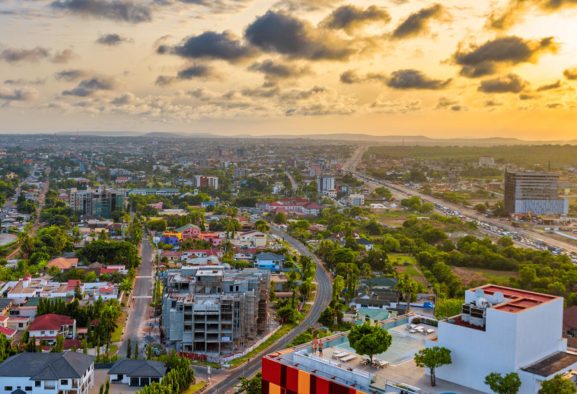Building a Legacy: Unveiling Ghana’s Architectural Marvels

Ghana, a land of vibrant culture, history, and beauty, boasts architectural marvels that stand as a testament to the nation’s rich heritage and creative ingenuity. From ancient forts that whisper tales of the past to modern structures that push the boundaries of design, Ghana’s architectural landscape tells a captivating story of innovation, resilience, and the pursuit of a lasting legacy. Join us as we embark on a journey to uncover the remarkable architectural gems that define Ghana’s unique identity.
Embracing History: Forts and Castles
Ghana’s coastline is adorned with forts and castles that bear witness to the nation’s complex history. These imposing structures, built by European powers during the colonial era, were once centers of trade, power, and sadly, the transatlantic slave trade. The Cape Coast Castle and Elmina Castle, for instance, are enduring symbols of Ghana’s painful past. The stark juxtaposition of their stone walls against the azure sea serves as a reminder of the resilience of the Ghanaian people and their determination to rise above adversity.
Fusion of Tradition and Modernity
In the bustling streets of Accra, Ghana’s capital city, the architecture narrates a tale of the nation’s evolution from colonialism to independence and beyond. The Kwame Nkrumah Mausoleum stands tall as a tribute to the father of Ghanaian independence, merging modernist lines with subtle African motifs. The fusion of sleek design and cultural symbolism reflects Ghana’s commitment to embracing its heritage while forging a progressive path forward.
Echoes of Royalty: Palaces and Shrines
Ghana’s architectural legacy extends beyond its tumultuous history, encompassing the regal splendor of its traditional rulers. The Ashanti Royal Palace in Kumasi exudes an air of majesty, featuring intricate carvings and vibrant murals that honor the Ashanti kingdom’s legacy. The palace isn’t just a physical structure; it embodies the collective memory and values of the Ashanti people, preserving their cultural heritage for generations to come.
A Sanctuary of Spirituality
Ghana’s architecture is also a reflection of its deeply rooted spirituality. The Larabanga Mosque, with its humble mud-and-stick construction, stands as one of the oldest mosques in West Africa. It is the simplistic design and intricate wooden supports are a tribute to the nation’s Islamic history and the craftsmanship of local artisans. Similarly, the Catholic Paga Poultry Cathedral demonstrates Ghana’s ability to infuse creativity into religious spaces, featuring a roof that mimics the wings of a bird in flight, inviting worshippers into a space of devotion and wonder.
Innovating for the Future
As Ghana marches into the future, its architectural landscape continues to evolve. Modern skyscrapers rise against the horizon, showcasing the nation’s aspiration for economic growth and urban development. The Accra International Conference Centre, with its distinctive modern design, has become an emblem of Ghana’s global engagement and its willingness to embrace contemporary aesthetics while honoring its cultural heritage.
Conclusion
Ghana’s architectural marvels tell a multifaceted story of resilience, identity, and the pursuit of a lasting legacy. From the somber echoes of forts that have weathered the storms of history to the soaring heights of modern skyscrapers that symbolize progress, each structure weaves a narrative of a nation constantly shaping its destiny. These architectural wonders stand as more than just buildings; they are living embodiments of Ghana’s past, present, and future it aspires to build.